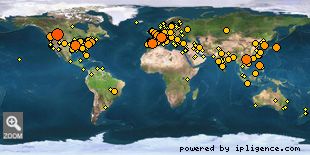 » NMR Jobs
» NMR Jobs |
|
|
|
|
|
|
 » Cool papers
» Cool papers |
|
|
|
|
|
|
 » NMR books
» NMR books |
|
|
|
|
|
|
 » NMR theses
» NMR theses |
|
|
|
|
|
|
 » NMR blogs
» NMR blogs |
|
|
|
|
|
|
 » NMR news
» NMR news |
|
|
|
|
|
|
 » NMR tweets
» NMR tweets |
|
|
|
|
|
|
 » NMR videos
» NMR videos |
|
|
|
|
|
|
 » NMR pictures
» NMR pictures |
|
|
|
|
|
|
 » Online Users: 171
» Online Users: 171 |
| 0 members and 171 guests |
| No Members online |
| Most users ever online was 1,278, 01-09-2024 at 07:38 AM. |
|
 » Welcome!
» Welcome! |
Welcome, NMR world!

Our visitors map.
|

 DNP-assisted solid-state NMR enables detection of proteins at nanomolar concentrations in fully protonated cellular milieu DNP-assisted solid-state NMR enables detection of proteins at nanomolar concentrations in fully protonated cellular milieu |
|
Mar 24, 2024 - 6:32 AM - by nmrlearner
|
 DNP-assisted solid-state NMR enables detection of proteins at nanomolar concentrations in fully protonated cellular milieu
DNP-assisted solid-state NMR enables detection of proteins at nanomolar concentrations in fully protonated cellular milieu
Abstract
With the sensitivity enhancements conferred by dynamic nuclear polarization (DNP), magic angle spinning (MAS) solid state NMR spectroscopy experiments can attain the necessary sensitivity to detect very low concentrations of proteins. This potentially enables structural investigations of proteins at their endogenous levels in their biological contexts where their native stoichiometries with potential interactors is maintained. Yet, even with DNP, experiments are still sensitivity limited. Moreover, when an isotopically-enriched target protein is present at physiological levels, which typically range from low micromolar to nanomolar concentrations, the isotope content from the natural abundance isotopes in the cellular milieu can outnumber the isotope content of the target protein. Using isotopically enriched yeast prion protein, Sup35NM, diluted into natural abundance yeast lysates, we optimized sample composition. We found that modest cryoprotectant concentrations and fully protonated environments support efficient DNP. We experimentally validated theoretical calculations of the limit of specificity for an isotopically enriched protein in natural abundance cellular milieu. We establish that, using pulse sequences that are selective for adjacent NMR-active nuclei, proteins can be specifically detected in cellular milieu at concentrations in the hundreds of nanomolar. Finally, we find that maintaining native stoichiometries of the protein of interest to the components of the cellular environment may be important for proteins that make specific interactions with cellular... [Read More]
|

 0 Replies | 138 Views
0 Replies | 138 Views
|
|
 » BioNMR wiki
» BioNMR wiki |
|
|
|
|
|
|
 » NMR discussion
» NMR discussion |
|
|
|
|
|
|
 » NMR conferences
» NMR conferences |
|
|
|
|
|
|
 » NMR software
» NMR software |
|
|
|
|
|
|
 » Pulse sequences
» Pulse sequences |
|
|
|
|
|
|
 » NMR community
» NMR community |
|
|
|
|
|
|
 » NMR presentations
» NMR presentations |
|
|
 » NMR web resources
» NMR web resources |
|
|
|
|
|
|
 » NMR feature requests
» NMR feature requests |
|
|
 » NMR bookmarks
» NMR bookmarks |
|
|
|
|
|
|
 » Stats
» Stats |
Members: 3,202
Threads: 25,729
Posts: 26,115
Top Poster: nmrlearner (23,173)
|
| Welcome to our newest member, bpadmanabhan |
|



